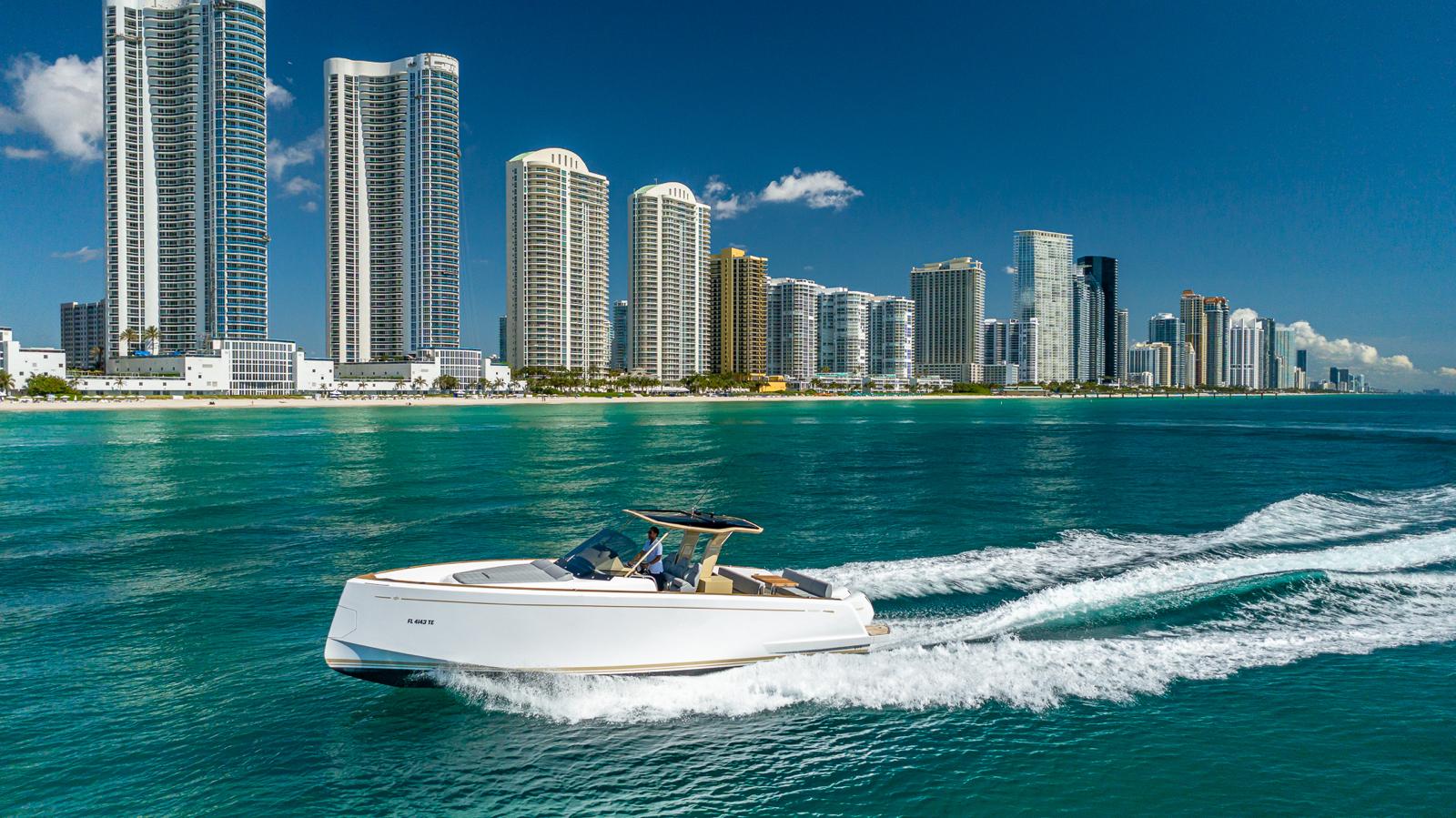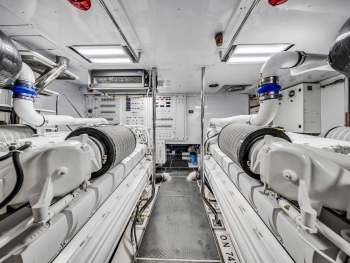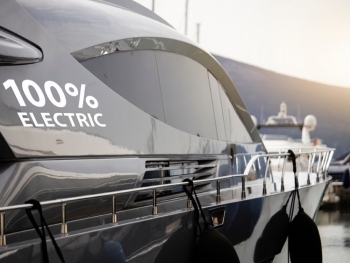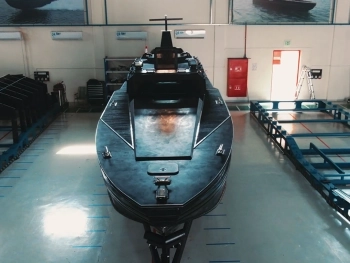Buying a yacht is more than a financial decision - it’s a lifestyle choice.
Whether you dream of weekend escapes, ocean crossings, or hosting friends in style, the size and type of yacht you choose determines not only how you travel but how you live on the water.
From compact cruisers to luxury explorers, today’s yacht market offers something for every purpose - but finding the right fit requires understanding your habits, priorities, and level of experience.
This guide will help you navigate the options, so you can find a yacht that perfectly matches your lifestyle - and your long-term satisfaction.
1. Start With Your Purpose: How You Plan to Use Your Yacht
The right yacht begins with a simple question:
“What kind of experiences do I want at sea?”
1.1 Day Cruising
If your goal is short trips and weekend getaways, you don’t need an ocean-going vessel.
A 30–50-foot motor yacht or day cruiser offers:
- Quick handling and low fuel consumption
- Easy docking and storage
- Ideal comfort for 4–8 passengers
- Great for coastal or inland waters
Perfect for: Family outings, short vacations, entertaining guests
1.2 Extended Cruising
If you plan multi-day trips or seasonal voyages, look for 45–75-foot cruisers or catamarans that provide:
- Comfortable sleeping cabins and galley
- Generous storage and tank capacity
- Seakeeping stability for moderate weather
- Optional crew quarters for long-range convenience
Perfect for: Couples, small families, and liveaboard travelers
1.3 Offshore and Expedition Yachting
For global adventurers and experienced owners, expedition or explorer yachts (70–150 feet) are the ultimate expression of freedom.
They feature:
- Heavy displacement hulls for range and stability
- Long-range fuel capacity (up to several thousand nautical miles)
- Reinforced construction for challenging waters
- Advanced navigation and support systems
Perfect for: World cruising, high-seas exploration, and off-grid luxury
1.4 Charter and Business Use
If you plan to offset ownership costs or run a charter operation:
- Choose a yacht between 70–130 feet with multiple guest cabins, entertainment spaces, and professional galley areas.
- Prioritize layout flexibility, low operating costs, and strong brand reputation for charter demand.
Perfect for: Owners looking to combine passion and profit
2. Understanding Yacht Types
Yacht “type” refers to the hull configuration and intended performance. Each category offers unique benefits and trade-offs.
| Type | Description | Advantages | Best For |
|---|---|---|---|
| Motor Yacht | Powered by engines, wide range of sizes | Speed, comfort, easy to handle | Coastal cruising, luxury trips |
| Sailing Yacht | Wind-powered with auxiliary engines | Eco-friendly, quiet, traditional charm | Enthusiasts, long voyages |
| Catamaran | Two hulls, broad beam | Stability, space, shallow draft | Families, leisure charters |
| Explorer Yacht | Built for long-range and harsh conditions | Range, durability, independence | Adventurers, liveaboards |
| Sport Yacht | High-speed, performance-oriented | Speed, agility, style | Short trips, luxury day use |
| Trawler | Fuel-efficient displacement hulls | Comfort, range, low speed | Long cruises, retirees |
💡 Pro Tip: For buyers focused on safety, sustainability, and low maintenance, builders like Perulla offer innovative polyethylene-hulled motor yachts - combining modern engineering with resilience and simplicity.
3. Size Matters: How Yacht Length Impacts Lifestyle and Cost
3.1 Under 40 Feet
- Ideal for: Weekend cruisers and coastal day trips
- Advantages: Easy to operate, dock, and maintain
- Considerations: Limited range and storage
- Costs: Lowest purchase and upkeep
3.2 40–70 Feet
- Ideal for: Extended cruising, small families
- Advantages: Spacious cabins, comfortable amenities, can be owner-operated
- Considerations: Higher fuel and docking costs
- Costs: Mid-range maintenance (≈ 10% of value per year)
3.3 70–120 Feet
- Ideal for: Luxury lifestyle, frequent entertaining, charters
- Advantages: Professional crew, multiple decks, long-range capability
- Considerations: Crew management and mooring logistics
- Costs: High operational expenses and management requirements
3.4 120 Feet and Above
- Ideal for: Global exploration and elite luxury
- Advantages: Ultimate comfort, autonomy, and presence
- Considerations: Complex systems, multiple crew, and high fixed costs
- Costs: Often over $1 million annually in maintenance and operation
4. Hull Type and Performance: Stability, Speed & Comfort
The hull design determines how your yacht behaves at sea - and how comfortable you’ll feel on board.
| Hull Type | Performance Traits | Ideal Use |
|---|---|---|
| Planing Hull | Rises on top of water for speed; efficient for short trips | Sport yachts, coastal cruising |
| Semi-Displacement Hull | Balances efficiency and stability | Motor cruisers, mid-size yachts |
| Displacement Hull | Moves through water; slower but stable and fuel-efficient | Explorers, trawlers, bluewater cruising |
| Catamaran Hull (Twin Hulls) | Wide, stable, minimal roll; efficient and spacious | Leisure, families, charters |
Material Considerations
- Fiberglass (GRP): Common, affordable, smooth finish
- Aluminum: Lightweight and strong, ideal for custom builds
- Steel: Very durable, used in expedition yachts
- Polyethylene (HDPE): Impact-resistant, corrosion-proof, recyclable - the future of low-maintenance yacht building
Perulla’s polyethylene hulls are particularly appealing for owners seeking durability and long-term value. They absorb impact, resist corrosion, and reduce upkeep - ideal for practical, adventure-ready yachts.
5. Crew and Operation Requirements
Before you commit to a size or type, ask: Will I operate it myself or hire a crew?
| Yacht Length | Crew Requirement | Typical Setup |
|---|---|---|
| < 45 ft | None – owner-operated | Single or couple operation |
| 45–70 ft | Optional crew | Captain + deckhand optional |
| 70–100 ft | Recommended | Captain, engineer, steward |
| 100+ ft | Essential | Full-time professional crew |
Operating complexity rises with size - navigation systems, mooring, and maintenance all scale accordingly.
6. Budgeting Beyond the Purchase Price
Yacht ownership extends far beyond the sticker price. You’ll need to factor in:
- Maintenance (7–15% of yacht value annually)
- Dockage and storage fees
- Insurance (≈1–2% annually)
- Fuel and crew salaries (if applicable)
Smaller or more efficient yachts - especially those using hybrid propulsion or low-maintenance hull materials - can substantially reduce annual expenses.
7. Lifestyle Scenarios: Matching Yachts to Owners
| Lifestyle | Ideal Yacht Type & Size | Why It Works |
|---|---|---|
| Weekend Explorer | 30–50 ft motor cruiser or sport yacht | Easy to handle, quick getaways |
| Family Adventurer | 45–70 ft catamaran or cruiser | Comfort, stability, range |
| Global Traveler | 70–120 ft explorer yacht | Long range, rugged design |
| Entertainer | 80–100 ft luxury motor yacht | Deck space, amenities, wow factor |
| Eco-Conscious Owner | Hybrid or HDPE yacht (Perulla) | Sustainable, efficient, low maintenance |
8. Future-Proofing Your Choice
When buying a yacht, think ahead:
- Where will you cruise most often? (Mediterranean? Caribbean? Coastal lakes?)
- Will your needs change over time? (Larger family, charter, longer trips?)
- What maintenance commitment suits you?
Choosing a yacht made with durable materials like polyethylene and hybrid propulsion systems can protect your investment for decades - reducing costs and environmental impact.
9. The Perulla Approach: Design That Adapts to You
Perulla represents a new generation of yacht design - focused on performance, resilience, and simplicity.
Their philosophy is built around yachts that are:
- Durable: Polyethylene hulls that withstand impact and corrosion
- Efficient: Optimized hull forms for reduced drag and fuel use
- Low Maintenance: Minimal upkeep for maximum enjoyment
- Customizable: Modern layouts that adapt to your lifestyle
For buyers who value practical luxury and long-term ownership satisfaction, Perulla offers a smart balance of technology and design innovation.
Choosing the right yacht isn’t just about size or status - it’s about aligning your vessel with your lifestyle, ambitions, and comfort level.
A small, well-designed cruiser may offer more joy than a superyacht that’s too large to manage. Similarly, a polyethylene explorer like those from Perulla could outlast a traditional fiberglass yacht while costing less to maintain.
Define how you want to use your yacht, where you’ll go, and how much time you’ll spend aboard. Then, match those priorities to a yacht built to deliver - in every sense of the word.
Because the right yacht isn’t the biggest or the fastest - it’s the one that fits your life perfectly.












